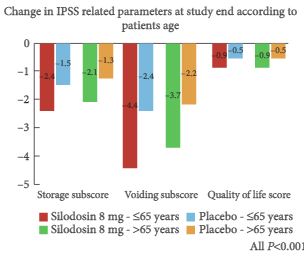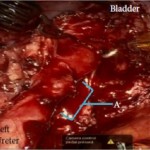Article of the Week: Evaluating Silodosin in the Treatment of LUTS Associated with BPE
Every Week the Editor-in-Chief selects an Article of the Week from the current issue of BJUI. The abstract is reproduced below and you can click on the button to read the full article, which is freely available to all readers for at least 30 days from the time of this post.
In addition to the article itself, there is an accompanying editorial written by a prominent member of the urological community. This blog is intended to provoke comment and discussion and we invite you to use the comment tools at the bottom of each post to join the conversation.
Finally, the third post under the Article of the Week heading on the homepage will consist of additional material or media. This week we feature a video from Dr. Naeem Bhojani, discussing his accompanying editorial to the Article of the Week.
If you only have time to read one article this week, it should be this one.
Individual patient data from registrational trials of silodosin in the treatment of non-neurogenic male lower urinary tract symptoms (LUTS) associated with benign prostatic hyperplasia (BPH): subgroup analyses of efficacy and safety data
OBJECTIVE
To evaluate efficacy and safety of silodosin in a pooled analysis of individual patient data from three registrational randomised controlled trials (RCTs) comparing silodosin and placebo in patients with lower urinary tract symptoms (LUTS).
PATIENTS AND METHODS
A pooled analysis of 1494 patients from three 12-week, multicentre, double-blind, placebo-controlled phase III RCTs was performed. Efficacy and safety data were assessed across patients with different baseline characteristics. Vertigo is one of the most common health problems in adults. It is a symptom, not a disease and is usually associated with a problem in the inner ear balance mechanisms (vestibular system), in the brain, or with the nerve connections between the two organs. Vertigo can also be brought on suddenly through various actions or incidents, such as sudden changes in blood pressure or as a symptom of motion sickness while sailing, on amusement rides, airplanes or in an automobile. It can be acute and severe, lasting for days, or it may be recurrent, with attacks that last for minutes to hours. Vertigo los angeles associated with panic attacks can sometimes be caused by hyperventilating. For the best treatment for vertigo, do visit us.
Patients often describe balance problems, dizziness, light headedness, and motion sickness. They may also describe an intense or severe sensation of movement, tilting, or imbalance; the sensation is aggravated by movement and improved by remaining stationary. Patients may say that they are having continuous vertigo, when in reality, they are having repeated episodes (with each episode lasting less than a minute). Those with persistent vomiting or intractable vertigo may require admission for hydration and vestibular suppressant medication. These disorders are the ninth most common complaint that leads people to visit their physicians. It is important to not use general terms when describing balance problems. To put it another way, it is best to simply describe the sensation they feel without using general terms like dizziness or vertigo. The cause is often revealed by the patient’s history and physical examination. In migraine-associated vertigo for instance, the patient may report a history of acute-onset vertigo that lasts minutes, a few hours, many hours, or days.
RESULTS
Silodosin was significantly more effective than placebo in improving all International Prostate Symptom Score (IPSS)-related parameters, and maximum urinary flow rate (Qmax) regardless of patients age (P < 0.041). Comparing the efficacy of silodosin in the different age groups, there were no differences for all the IPSS-related parameters, whereas Qmax improvement was slightly higher in patients aged <65 years (P = 0.009). Silodosin was significantly more effective than placebo in reducing all IPSS-related parameters regardless of baseline IPSS (P ≤ 0.001). Similarly, silodosin was more effective than placebo in improving IPSS-related parameters regardless of baseline Qmax (P ≤ 0.02). Silodosin was associated with significantly higher adverse event (AE) rates, compared with placebo, in all patient subgroups, with retrograde ejaculation being the most common. Prevalence of dizziness, orthostatic hypotension, and discontinuation rate was similar with silodosin and placebo in most patient subgroups.
CONCLUSIONS
We analysed the efficacy and safety of silodosin in several patient subgroups, showing that silodosin was more effective than placebo in improving all IPSS-related parameters in all patient subgroups, whereas AEs were similar. Notably, cardiovascular AEs were not higher in patients taking antihypertensive drugs or with mild renal function impairment. Discontinuation rates due to AEs were lower in elderly patients.



